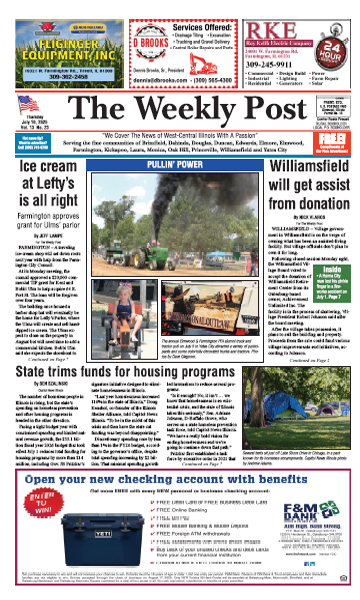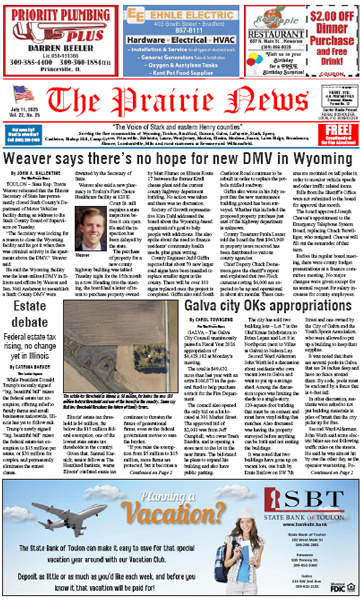By BILL KNIGHT
For The Weekly Post
Besides affecting the nation’s health and economy, the ongoing pandemic changed much of schools’ assessment data offered in the 2020 Illinois Report Card, released Oct. 30. But other details offer glimpses of the state’s students and school districts.
Starting last spring, the pandemic disturbed schools’ instruction and operations, interfering with methods to measure changes since 2019. For the first time, there’s very little assessment on academics. “COVID-19 impacted most student data, limiting year-to-year comparisons,” said Jackie Matthews, spokeswoman for the Illinois State Board of Education (ISBE).
Due to COVID-19’s impact, Illinois this year got a federal waiver releasing the state from the requirement to assess performances in math, English language arts, and science, and also the mandate to issue new designations (“Excellent,” etc.), so schools’ designations didn’t change.
“The information remains valuable, just not much different from last year,” commented Williamsfield Superintendent Tim Farquer.
Princeville Superintendent Shannon Duling agreed, adding, “With the lack of assessment data, comparison data between the two years really isn’t very helpful. Although, one could argue that comparisons in a ‘typical’ year are often difficult to make as the state assessments haven’t remained consistent. It is difficult to get any useful data when the ‘target’ continues to change.”
In Elmwood, Superintendent Chad Wagner said, “The report card will certainly not be as useful to us from a student-assessment, data-analysis viewpoint during the pandemic. However, I am always interested to see the district’s demographics information that is presented on the site.”
Brimfield Superintendent Tony Shinall said the 2020 Report Card is largely a rollover from the previous year, but “we do value it. We have used NWEA’s MAP [the Northwest Evaluation Association’s Measure of Academic Progress] testing to gain insight into student performance. We are very pleased with the outcomes. We are looking into ways to use this valuable information to tailor instruction in an ever-changing educational landscape.”
Farmington Superintendent Zac Chatterton echoed the consensus, remarking, “From the academic progress standpoint, we were not able to use the report card. We did spend a considerable amount of time with our benchmark testing [elsewhere]. As we look at our fall-to-fall reading and math scores [in other assessments] we did not experience the kind of drop-off that we were anticipating.
Our reading scores held very strong and I applaud the efforts of our teachers and parents for keeping these skills strong during these unconventional times.
In Springfield, there was recognition of improvement in preparation for the future. “The Report Card shows continued growth in students taking [and] succeeding in college and career preparation courses,” said ISBE’s Matthews.
In The Weekly Post area, Elmwood’s Wagner said, “helping kids to prepare for post-secondary life, while checking off some classes that would have been required for general education coursework, is a big positive – saving money and helping prepare kids for greater opportunities.”
A snapshot of highs and lows from area schools (see charts) include Brimfield District 309 recording 96.7 percent of 8th graders passing algebra but just 48.8 percent of Kindergarteners showing readiness to learn; and Williamsfield District 210 showing a 95 percent graduation rate but 80 percent of those in community colleges requiring remediation.
“Enrollment, academic and climate data continue trending up,” Farquer said. Duling said in some ways the absence of state data gave staff more time to focus on NWEA and other data. “The extra time really helped our teachers focus on the individual needs of their students,” he said.
Wagner also was pleased with “a couple of areas that did show data: 9th Graders on Track, where we improved from 91 percent (87 percent state) to 98 percent (89 percent state), as well as Early College Coursework, where we went from 26 students (11.8 percent of HS students) to 30 students (15.4 percent of HS students) taking college-level courses during their junior and senior years.”
Chatterton commented, “It is difficult to make curricular changes even if you know that they need to occur when there are so many other variables that require everyone’s attention. The silver lining is that in the absence of academic performance data we can give more attention to the social and emotional well-being of our children that will ultimately yield improved academic scores.”
In Brimfield, Shinall said, “We have learned more about our children than previously known. The nature of education right now is extremely focused on the social and emotional well-being of students, faculty and staff.” Planning for an uncertain future while challenges remain isn’t easy.
“The COVID-19 pandemic continues to be a challenging force for all: students, parents, teachers and administrators,” Wagner said. “I worry about the impact that time away from school will have on our students, long-term.” Farquer is looking at the future, too – in a fiscal sense. “We are strategically planning for potential revenue losses due to COVID-19,” he said.
Finally, according to Shinall, “I see challenges in terms of digital equity and meeting the needs of the 21st century learner. In rural areas, connectivity issues were brought to light as a result of remote learning.”

Copyright © 2025 illinoisweeklies.com






